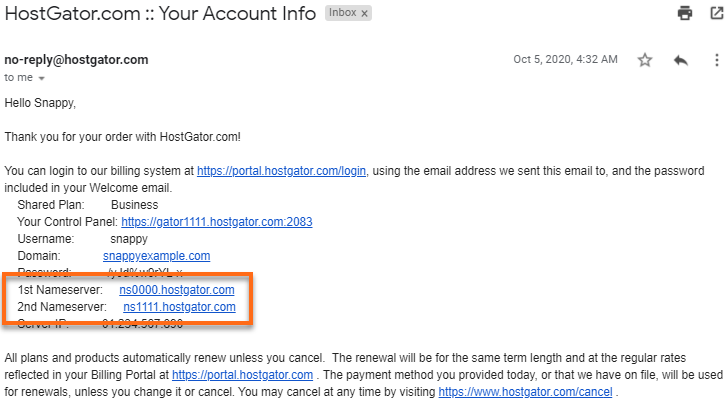
Rack is used to interface with most Ruby frameworks for web development, including Rails. It is simple to use and easy to understand.
Web Servers
Rack has made this process much easier by providing a common protocol that any server can use to communicate with any framework that follows its specification. Rack has made this process much simpler by providing a common protocol that any server can use to communicate with any framework that follows it's specification.
App Servers
A web server can be used to run many different types of software. These apps can range from something as simple as a contact form, to more complex applications with APIs and database backends. These apps can be complicated to deploy, and it's hard to know what kind of server to use for each.

It is important to know what category your application is in. This usually depends on how it will be accessed. It can save you headaches and give you an understanding of your software stack.
Edit Configurations). After you create your Rack configuration, the saved version can be used to launch and debug your Rack app.
Puma
Puma is a Ruby web server built specifically for Rack-based applications. It was initially inspired by Mongrel, but redesigned to only work with Rack for maximum efficiency.
You can't get it for free, but if your application is IO-bound and you want the best performance from an open-source server, give it a shot. Try it! It supports multi-processing as well as single-threaded.

Phusion Passenger
In "standalone", it can function just like a Rails app server. The Rack app can be used without an application server by installing it directly into your server. This is a great option if you need to host a lot of apps or if you are looking for centralized server management.
Passenger has the best feature of all: it is easily upgradeable to newer Rails version via container redeployment. It also helps protect your application against Slowloris attacks, which can eat up server resources.
Rack-based servers
Rack-based servers have the advantage of being based on Apache/NginX and are easily able to be upgraded to Ruby and all its dependencies. The bundler dependency manager will track and install gems for your project. This makes them an easy and cost-effective method to deploy projects.
FAQ
What is a static web site?
A static website contains all content stored on a server that visitors can access via web browsers.
The term "static" is used to refer to the absence of dynamic features like changing images, video, animations, etc.
This type of site was originally developed for use in corporate intranets but has since been adopted by individuals and small businesses who want simple websites without the complexity of custom programming.
Because static websites require less maintenance, they have grown in popularity. They're easier to update and maintain when compared to a fully-featured website with many different components (such as blogs).
They load much faster than dynamic counterparts. This makes them perfect for users who are using mobile devices or have slow Internet access.
Static websites are also more secure than dynamic ones. Static websites are much harder to hack than dynamic ones. Hackers have only access to data stored in a database.
There are two main methods to create static websites:
-
Use a Content Management System (CMS).
-
Static HTML Website Creation
The best one for you will depend on your specific needs. A CMS is my recommendation if your first website was created.
Why? Because it allows you to have full control over your website. A CMS means that you don't have to hire someone to set up your website. Upload files to the web server.
You can still learn how to code and create a static website. It will take some time to learn to program.
Are I more likely to be hired for a job as a Web Developer if my portfolio is good?
Yes. You must have a portfolio to be considered for a job in web development or design. Your portfolio should show examples of your skills, experience, and knowledge.
Portfolios usually include samples of past projects. You can include anything that demonstrates your skills. Your portfolio should include everything from mockups, wireframes, logos, brochures, websites, and even apps.
What is the best platform for creating a website design?
WordPress is the best platform to design a website. It offers all the features that you need to build a professional-looking website.
These themes are simple to install and modify. You can choose from thousands of free themes available online.
Plugins are another way to add functionality. They can do everything, from adding social buttons to creating contact pages to adding forms.
WordPress is very user-friendly as well. You don't even need to know HTML code in order to modify your theme files. To change your theme files, all you have to do is click on an image and select the desired changes.
There are many other platforms available, but I recommend using WordPress because it's been around for years and is still used by millions worldwide.
Do I Need Any Technical Skills To Design And Build My Site?
No. All you need is an understanding of HTML and CSS. You can find tutorials online for HTML and CSS.
How do I design a website.
Understanding your customers' needs is the first step. What do your customers want from you when they visit your website?
What problems might they have if they don't find what they're looking for on your site?
Once you know this, you must figure out how to solve those problems. Your site must look professional. It should be easy-to-use and navigate.
Your website should be well-designed. It shouldn't take too many seconds to load. If it does take too long, people won't stay as long as they would like to. They'll leave and go elsewhere.
If you want to create an eCommerce site, think about where all of your products are located. Are they all located in the same location? Or are they scattered around your site?
Decide whether you plan to sell one product at a time or several products. Are you interested in selling one type of product? Or multiple types?
Once you have answered these questions, you can begin building your site.
Now, it's time to take care of the technical aspects. How will your site operate? It will it work fast enough? Can it be done quickly by people using their computers?
Are people able to purchase something without paying extra? Will they have to register with your company before they can buy something?
These are crucial questions you should be asking yourself. You'll be able to move forward once you have the answers to these important questions.
What is Website Design Software?
Web design software is used to create web pages and other digital media by graphic artists, photographers and illustrators.
There are two types of website design software available: cloud-based and desktop apps. Desktop apps are installed locally on your computer and require you to install additional software on your computer. Cloud-based solutions are hosted remotely on the internet and require no additional software on your computer, making them ideal for mobile users.
Desktop Applications
Although desktop applications are more powerful than those offered by cloud-based services, they may not be necessary. Because it's more convenient, some people prefer to use a desktop app. Others like to use the same tool regardless of whether they are working on a laptop or a smartphone.
Cloud-Based Solutions
A cloud-based solution is a good choice for web designers who are looking to save money and time. These services allow you to edit any type of document from anywhere that has an internet connection. This allows you to use your tablet while waiting for your coffee maker to brew.
If you decide on a cloud-based solution, you will need to purchase a license. You don't have to buy additional licenses for upgrading to the latest version.
If you have Photoshop, InDesign and Illustrator, these programs can be used for creating web pages.
Statistics
- The average website user will read about 20% of the text on any given page, so it's crucial to entice them with an appropriate vibe. (websitebuilderexpert.com)
- It enables you to sell your music directly on your website and keep 100% of the profits. (wix.com)
- When choosing your website color scheme, a general rule is to limit yourself to three shades: one primary color (60% of the mix), one secondary color (30%), and one accent color (10%). (wix.com)
- Is your web design optimized for mobile? Over 50% of internet users browse websites using a mobile device. (wix.com)
- Did you know videos can boost organic search traffic to your website by 157%? (wix.com)
External Links
How To
How do I choose between CMSs?
Two types of Content Management System are available. Web Designers typically use static HTML and dynamic CMS. WordPress is the most popular CMS. Joomla is a good choice if your site needs to look professional. You can create any kind of website with Joomla!'s powerful open-source CMS. It's very easy to use and configure. Joomla comes with thousands upon thousands of templates and extensions, so you don’t need to hire an expert to set up your site. Joomla is available for free download. Joomla can be used for many purposes.
Joomla is a powerful tool which allows you to easily manage every aspect your website. Joomla has many great features including a drag-and drop editor and multiple template support. It also includes image management, blog management, blog administration, news feed, eCommerce, as well as blog management. Joomla's many features make it a great option for anyone who doesn't want to spend hours learning code.
Joomla works on almost all devices. This makes it possible to easily develop websites for various platforms.
There are many good reasons to prefer Joomla over WordPress. There are many reasons people prefer Joomla over WordPress.
-
Joomla is Open Source Software
-
Easy to Install and Configure
-
Many thousands of pre-made templates and extensions
-
Download and use this free software
-
All Devices Supported
-
Amazing Features
-
Excellent Support Community
-
Very Secure
-
Flexible
-
Highly customizable
-
Multi-Lingual
-
SEO Friendly
-
Responsive
-
Social Media Integration
-
Mobile Optimized